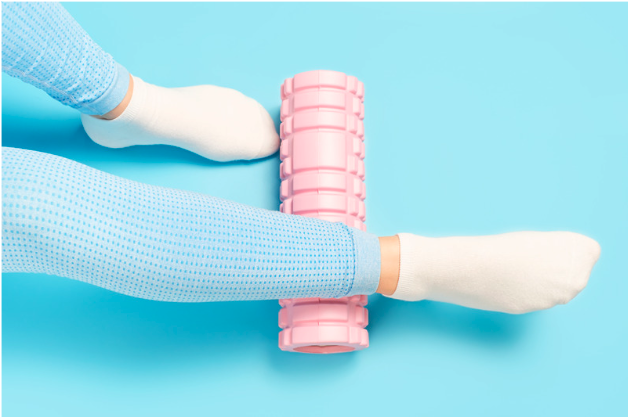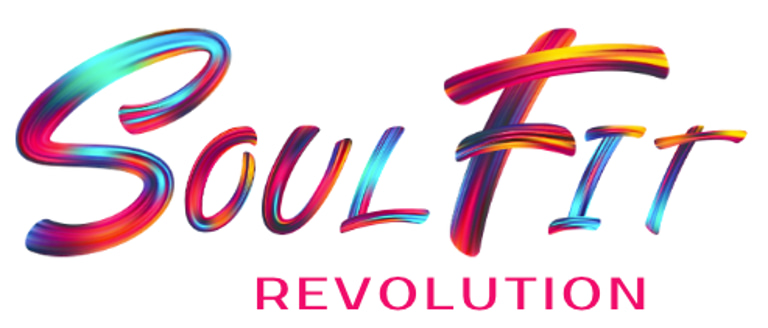My Newfound Love for Rolling: How Foam Rolling Has Transformed My Muscle Recovery
Foam rolling has become a game-changer for Paoli’s muscle recovery routine. In this post, she shares her journey of discovering the benefits of foam rolling, along with tips and suggestions for getting started. Learn how to incorporate foam rolling into your routine, whether it’s before a workout, after a tough session, or on rest days, and find out why this simple tool can make a big difference in how you feel and perform.
5 min read


I’ll be honest — when I first watched someone use a foam roller, I was a little skeptical, and honestly even a little fearful. They did not look, at first, like they were enjoying it too much and I couldn't imagine a reason to do what they were doing based on the look on their face. Sure, I’d seen those cylindrical foam rollers in the gym, at the store (I got mine on Amazon, of course), and heard people rave about how great they were for recovery, but I wasn’t convinced. It looked a bit uncomfortable, and I wondered if it was just another fitness trend that would come and go. But as someone who’s always looking for ways to improve my recovery and keep my muscles in top shape, I decided to give it a try. And let me tell you, foam rolling has been a game-changer for me!
Foam rolling has become a crucial part of my muscle recovery routine, and I can’t believe I didn’t start sooner. Not only has it helped me recover faster and feel less sore, but it’s also become a bit of a self-care ritual that I actually look forward to. If you’re curious about foam rolling or want to know how to get started, I’m here to share what I’ve learned and why I’m now a foam rolling convert.
Why I Started Foam Rolling
As someone who’s constantly on the move — whether I’m teaching a spin class, working out, or just going about my day — I put a lot of stress on my muscles. After years of pushing myself hard in my workouts, I started to notice that I was feeling more tightness and soreness, especially after intense sessions. I knew I needed to do something to help my muscles recover better, and that’s when I decided to give foam rolling a try.
At first, it felt a bit strange. The pressure from the roller can be intense, especially if you’ve never done it before. But after a few sessions, I started to notice a big difference. My muscles felt looser, my recovery time improved, and I was able to push myself harder in my workouts without feeling as much post-exercise soreness. It wasn’t long before foam rolling became a regular part of my routine, and now, I can’t imagine going without it.
Getting Started with Foam Rolling
If you’re new to foam rolling, don’t worry — it’s easier than it looks, and the benefits are worth the effort. Here are a few tips to help you get started:
1. Choose the Right Foam Roller:
There are different types of foam rollers out there, from soft to firm, and even textured ones with ridges or spikes. If you’re new to foam rolling, I recommend starting with a medium-density roller. It provides enough pressure to work out muscle knots without being too intense. As you get more comfortable, you can experiment with firmer or textured rollers to target specific areas.
2. Focus on Key Muscle Groups:
When I first started, I found it helpful to focus on the muscle groups that tend to get the most tight or sore, like my calves, quads, hamstrings, and back. Start by placing the roller under the muscle group you want to target, and slowly roll back and forth. When you find a tender spot, pause and hold the pressure there for 20-30 seconds. It might feel a bit uncomfortable at first, but that’s how you know you’re working out the knots.
3. Take It Slow:
Foam rolling isn’t a race—take your time and move slowly over each muscle group. The slower you go, the more effectively you’ll be able to target tight spots and release tension. I usually spend about 1-2 minutes on each muscle group, making sure to cover the entire area.
When and How Often to Foam Roll
One of the great things about foam rolling is that it’s versatile—you can do it before or after your workout, or even on rest days. Here’s how I like to incorporate foam rolling into my routine:
1. Pre-Workout:
If I’m feeling a bit tight before a workout, I’ll do a quick foam rolling session to loosen up my muscles. It’s a great way to increase blood flow and get your muscles ready for the work ahead. I’ll spend about 5-10 minutes rolling out key areas, like my calves, quads, and back, to make sure I’m fully warmed up.
2. Post-Workout:
After a tough workout, foam rolling is a must for me. It helps flush out toxins, reduce muscle soreness, and speed up recovery. I’ll spend a bit more time foam rolling after a workout—usually about 10-15 minutes—making sure to focus on any areas that feel particularly tight or sore.
3. On Rest Days:
Even on days when I’m not working out, I still make time for foam rolling. It’s a great way to keep my muscles loose and prevent any stiffness from setting in. I’ll usually do a longer session on rest days, taking my time to really work out any tension that’s built up.
The Benefits I’ve Experienced
Since incorporating foam rolling into my routine, I’ve noticed a significant improvement in my muscle recovery and overall flexibility. I feel less sore after workouts, my muscles feel looser, and I’m able to push myself harder in my training sessions. Plus, foam rolling has become a bit of a mindfulness practice for me — it’s a time to slow down, tune into my body, and take care of myself.
Foam rolling has also helped me prevent injuries by addressing tight spots and muscle imbalances before they become bigger issues. It’s an easy and effective way to stay on top of my muscle health, and it’s something I encourage all my students to try.
Why You Should Give Foam Rolling a Try
If you’re looking for a simple, effective way to improve your recovery and take better care of your muscles, I can’t recommend foam rolling enough. It might feel a bit uncomfortable at first, but stick with it—you’ll start to notice the benefits in no time.
Whether you’re a seasoned athlete or just starting your fitness journey, foam rolling is a tool that can help you stay healthy, flexible, and strong. So grab a foam roller, find a comfortable spot, and start rolling your way to better recovery.
Key Takeaway...Foam rolling has become an essential part of my recovery routine, helping me stay loose, reduce soreness, and prevent injuries. Whether you’re new to foam rolling or a seasoned pro, this simple practice can make a big difference in how you feel and perform. Give it a try, and see how foam rolling can transform your recovery too!
As always, thank you so much for spending a few minutes of your time with me today! Don’t forget to check out my Class Schedule for all my upcoming locations and times — I’d love to see you in class! And if you’re curious about any of my go-to products or recommendations, head over to the My Favorites page where I answer all your most frequently asked questions about what I use and love. Until next time...
...stay happy and healthy!
Revolutionize Your Fitness, Ignite Your Soul
Ignite your passion, fuel your spirit, and empower you to become the strongest version of yourself.
© 2024. All rights reserved.
Instagram:
Grab My Free Building Confidence Through Fitness eBook Now
Some links throughout this site are affiliate/referral links.
